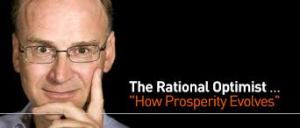Collective Leadership: From the Bottom Up
 The rapid pace of change around the globe has been widely reported on. No big news here.
The rapid pace of change around the globe has been widely reported on. No big news here.
Technology is largely responsible for dispersing jobs to far-off countries, improving our physical health and longevity, our being able to travel to destinations in warm climates for vacation, diagnosing and curing medical illnesses, and changing the nature of how work is done in the workplace (getting rid of the drudgery and elevating skill requirements).
The world of geo-politics has been a rollercoaster of non-stop events, from confrontations between Vietnam and China in the South China Sea to Iran’s nuclear weapon ambitions to Greece’s continuing financial soap opera.
And then there’s the growing awareness of such critical environmental problems as droughts in America’s southwest and northern Africa, contrasted by rising sea levels on coastal areas around the world.
Yet despite all what’s been happening in just recent years–a mere nanosecond in Earth’s history–one thing has barely budged: the human dimension of leadership–how it’s applied and adapted to a turbulent world of volatile and unrelenting change.
 Recently, your faithful correspondent was re-reading an excellent book from his collection: The Rational Optimist: How Prosperity Evolvesby Matt Ridley. A respected author of provocative books on evolution and society, Ridley takes the reader on journey back in time to early civilization.
Recently, your faithful correspondent was re-reading an excellent book from his collection: The Rational Optimist: How Prosperity Evolvesby Matt Ridley. A respected author of provocative books on evolution and society, Ridley takes the reader on journey back in time to early civilization.
One comment early in the book caused a light to go on. Ridley talks about “Collective Intelligence.” He uses the examples of the primitive stone axe, created some 500,000 years ago in what is now southern England, and the much later developed computer mouse. Both are man-made. However, the stone axe was made by one individual, while the mouse was made by hundreds of people in several different countries.
As Ridley states: “No single person knows how to make a computer mouse….At some point human intelligence became collective and cumulative in a way that happened to no other animal.”
But what has happened to leadership? Has it evolved to become more “collective” in our interconnected, complex world? Or has it mostly remained mired in the Frederick Winslow Taylor early 1900 era-thinking of management efficiency of production?
When it comes to the intertwined disciplines of leadership (inspiring and aligning people towards a common purpose) and management (getting work done right and on time) organizations are still for the most part operating with an early 20th Century mindset. Those in appointed management positions confuse this with leadership, the essence of which is founded upon followership. No followers? You’re not a leader.
Period.
 Enter Matt Ridley’s concept of Collective Intelligence. Then apply it to leadership and management. The world is too complex and organizations have become bureaucratic beasts (both government and business), yet depth of understanding and ability have become more important. This creates the contradiction and tension between specialization (aka Taylor) and the emerging skill requirement for integrating disparate cultures, consumer markets and technologies.
Enter Matt Ridley’s concept of Collective Intelligence. Then apply it to leadership and management. The world is too complex and organizations have become bureaucratic beasts (both government and business), yet depth of understanding and ability have become more important. This creates the contradiction and tension between specialization (aka Taylor) and the emerging skill requirement for integrating disparate cultures, consumer markets and technologies.
This is what leadership in the 21st Century is about: being able to grasp the critical importance of collective intelligence within organizations that are struggling to adapt to constant change. Collective leadership engages everyone in the organization, from top to bottom, being crystal clear on purpose, vision and operating values. In short, collective leadership recognizes that no single person or top management clique has the answer to complex questions, nor the definitive path to organizational success.
Let’s check back in with Matt Ridley, who takes a future-oriented view on collective intelligence towards the end of his book:
“Intelligence will become more and more collective; innovation and order will become more and more bottom-up; work will become more and more specialized, leisure more and more diversified.”
So what does this look like? For example, we’ll see physicians adjusting to their patients becoming increasingly better informed on health issues as a result of their research skills, media sources adapting to how readers and listeners organize their news on demand, and manufacturers responding to consumers’ preferences for customized products.
Ridley’s world is already being realized. This creates a huge call for a new type of leadership guiding public and private organizations. When that leadership arrives is an open question.
Take a moment to share your thoughts.
The Bottom-Up World is to be the great theme of this century.
– Matt Ridley (The Rational Optimist)
 Click here to download my complimentary e-book Discover Your Inner Leader: Reflections to Inspire and Motivate.
Click here to download my complimentary e-book Discover Your Inner Leader: Reflections to Inspire and Motivate.
Visit my e-Books, Resources and Services pages.



Just as you are saying here, just one hour ago today, I was reading, “The Wisdom of Andrew Carnegie, as Told to Napoleon Hill.” Quoting Andrew Carnegie, a self-made man who started with nothing, rising to become the richest man in the world in his time, “Two or more minds, working together in harmony toward a definite objective, have more power than a single mind….No great achievement is possible without the aid of other minds…it is necessary to induce other people to cooperate in carrying out a great plan….Moreover, I met with my Mastermind Group nightly (a group of four, who later expanded to more than twenty men, while Carnegie was still a laborer, without any money) with the purpose of making definite plans for carrying out their visions…Nightly, we entered into a detailed round-table discussion to build plans and carry out goals….”
Indeed, Lynne. Thanks for sharing this very pertinent insight.